Five Things to Check Out in Butte County Idaho
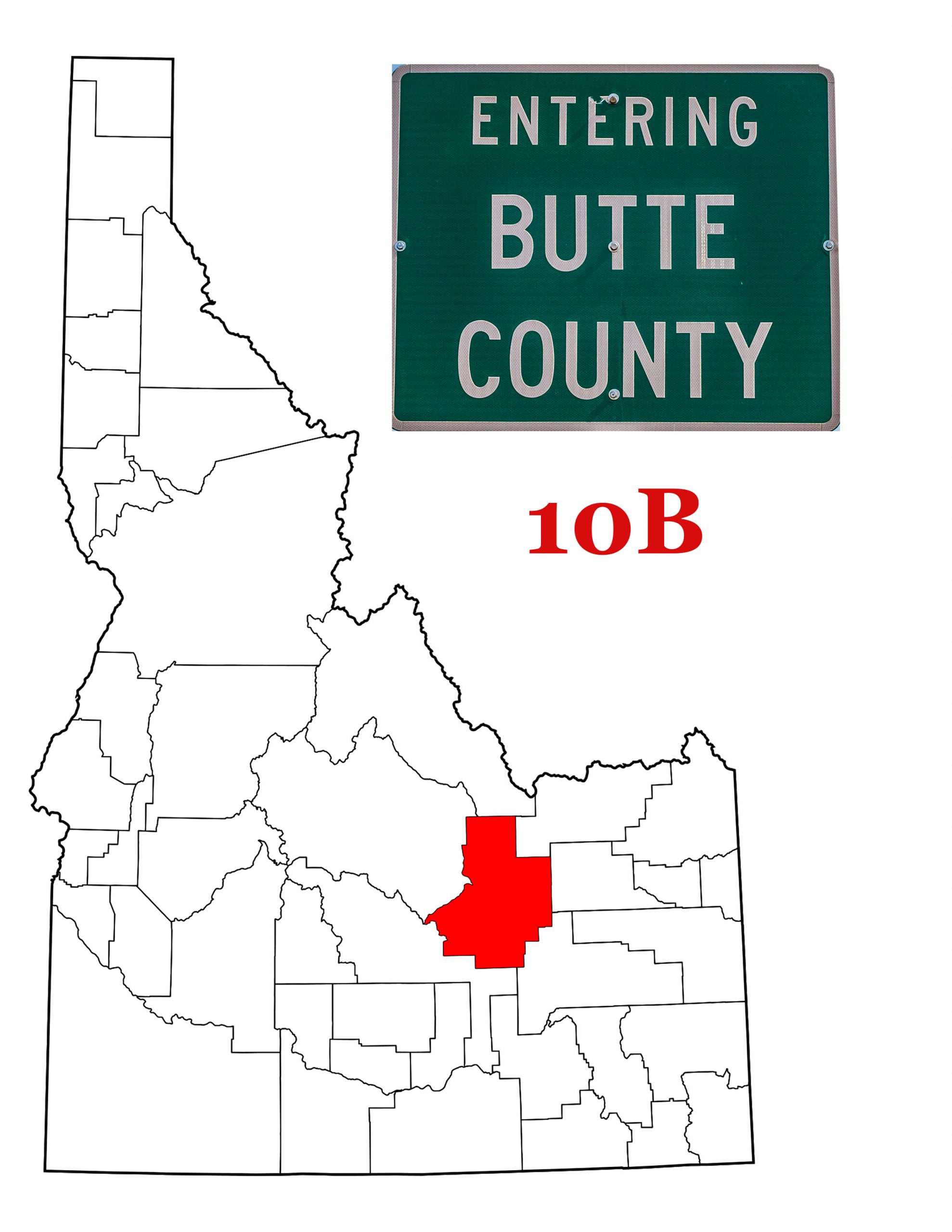
Introduction to Butte County, Idaho
The Idaho State Legislature created Butte County in 1917 with land taken from Bingham, Blaine and Jefferson Counties. In 1937, it gained more land from Custer County. The largest city and County Seat is Arco. The County covers 2,233 square miles, which makes it eleventh of Idaho’s forty-four counties in area. It’s 2018 estimated population of 2,611 puts it in 42nd place. Only Camas and Clark Counties are home to fewer people.
The County takes its name from the solitary mountains in the southern end of the county, known as Buttes. Specifically these refer to the Big Southern Butte, Quaking Aspen Butte, and Sarvisberry Butte, among others. Much of the County’s land is covered in lava flow, hence the Craters of the Moon National Monument in the southwestern corner. Also the Idaho National Engineering Laboratory (INEL) covers a good bit of eastern Butte County. If you are driving across east-central Idaho, you’ll probably drive through Butte County. US Highways 20, 26 and 93 all cross the County. So do Idaho State Highways 22, 33 and a very small bit of 28. What follows are five reasons to stop and get out of the car in Butte County, Idaho.
Craters of the Moon National Monument and Preserve
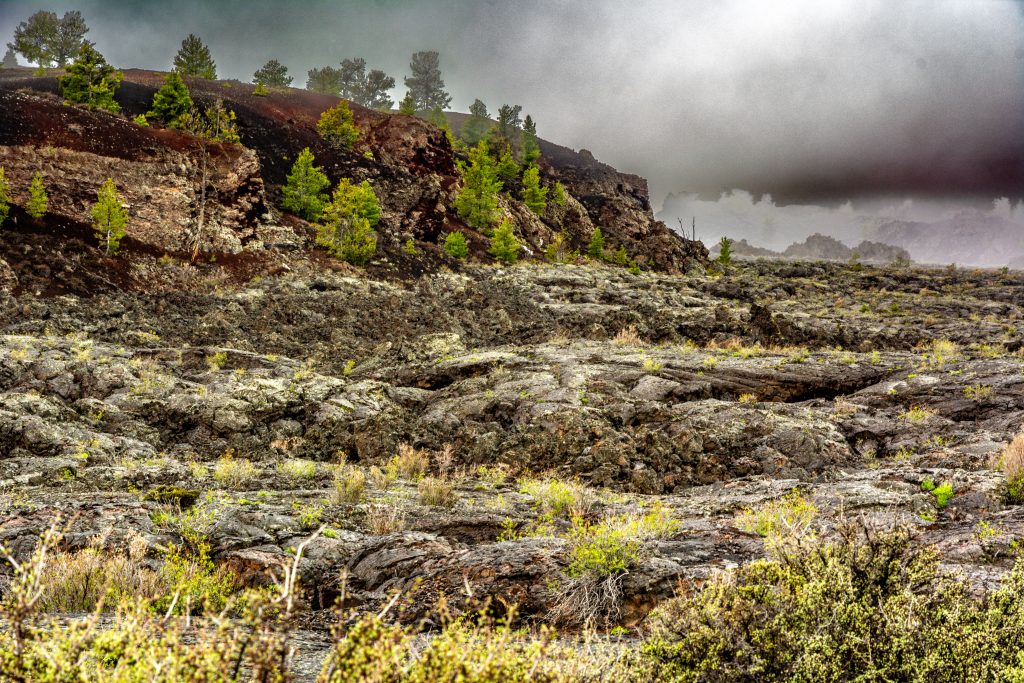
Perhaps the most notable natural phenomenon in the County is the Craters of the Moon National Monument and Preserve. Originally established on May 2nd, 1924, the Monument has grown over time to its present size of 1,117 square miles–roughly the same size as Rhode Island. Because of additions over time, the area has three major sections. The Developed Area has the campgrounds, the visitor’s center, and the accessible hiking trails. The Wilderness Area’s 43,243 acres fall under all the protections of the National Wilderness Preservation System. The U.S. Congress set aside this part of the park in 1970. In 2000, Congress added the Backcountry area, expanding the Monument 13-fold in size. The Backcountry is open to hunting, normally not allowed in National Parks. The Bureau of Land Management and the National Park System administer the region jointly. Both BLM and NPS are under the U.S. Department of the Interior.
It’s easy to get to the Developed Area. US Highways 20, 26 and 93 pass right by. As the Visitor’s Center is at 5,900 feet above sea level, be prepared for chilly mornings and evenings. I was last there in April, 2016, and the snow and fog made it almost impossible to see anything. Forewarned, as they say…
Goodale’s Cutoff–One of Butte County Idaho’s National Historic Places

While you’re at Craters of the Moon, take a trip along an alternative to the old Oregon Trail. Goodale’s Cutoff ran from Fort Hall in today’s Bingham County to near Boise. Along the way it skirted the Craters of the Moon, just north of the park’s Developed Area. Motor vehicles are not allowed on the “road,” but you can get a permit to hike or bike it. Goodale developed the trail as a short-cut. But it was also safer. The Oregon Trail itself, roughly 100 miles south following the Snake River, was open to attack by hostile natives. The Idaho State Historical Society has a good explanation for Goodale’s route which you can read online.
Arco and the Baptist Community Church
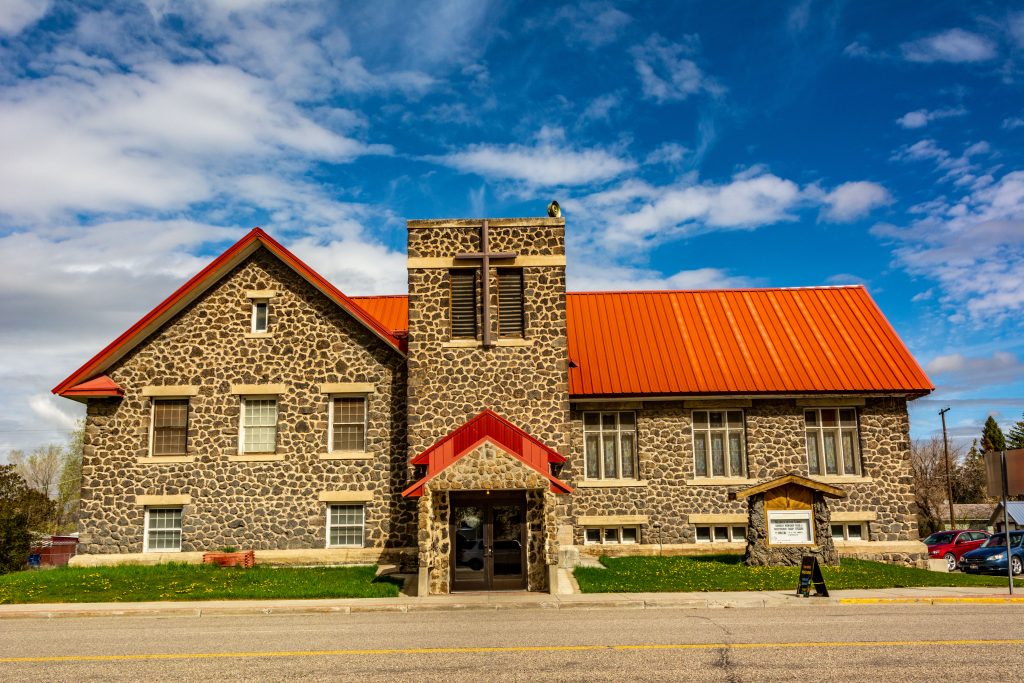
Arco, Idaho
Arco, Butte County’s largest community and County Seat, is a pretty town with a good deal of interesting architecture. At the time I’m writing this, Butte County has only three listings on the National Register of Historic Places. Goodale’s Cutoff is one. The Arco Baptist Community Church is another. The oldest religious community in the town, Baptists had their first local services in 1887.
In 1925, the local congregation got blueprints for a new L-shaped church building from the Baptist Home Mission Society. The plans called for square-block rock, but such stone was not available locally. Instead, the builders substituted locally sourced lava which makes the building unique. The orginal plans also called for a metal roof, but the builders substituted wood shakes instead. The builders completed their work in 1929. The current metal roof dates from 1987, and the large wooden cross from 1999. Despite those changes, the National Register added the church on November 29th, 2001.
While in Arco, check out the Butte County Court House, one of the smallest such buildings I have ever seen. I also liked the 1916 Masonic Lodge. All three buildings are on Arco’s main street. As is the Arco City Hall, another building faced with local black lava stone.
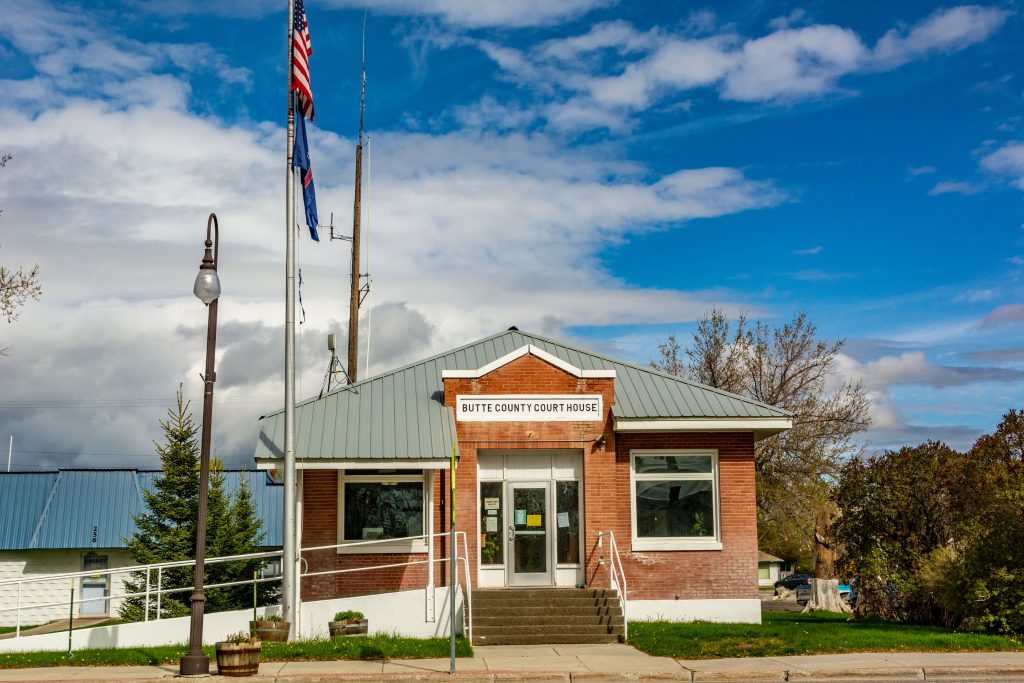
Arco, Idaho
INEL–The Idaho National Engineering Laboratory
Butte County’s third location on the National Register is a nuclear reactor, specifically Experimental Breeder Reactor Number 1. Eightteen miles southeast of Arco, the site is a decommissioned breeder reactor (bet you couldn’t figure that out), the first of its kind in the world. The reactor was able to light four 200 watt light bulbs on December 20th, 1951. By 1955, it produced enough electricity that Arco became the first city in the world to have all its electricity from nuclear power. The site, decommissioned in 1964, has become a museum. Today, should you be in the area between late May and early September, you can visit that museum.
And by the way, this section carries an obsolete name. During World War II, the U.S. used the Idaho desert to maintain and test munitions. The site served as a U.S. government artillery test range. After the War, the government continued using the region, now calling it the National Reactor Testing Station (NRTS). In 1975, it became ERDA (Energy Research and Development Administration) and in 1977 Idaho National Engineering Laboratory. 1997 added a second E, INEEL (Idaho National Engineering and Environmental Laboratory) and on February 1st, 2005, it became, simply, the Idaho National Laboratory (INL). You can visit INL–but only if you have the proper government clearance.
Other Butte County Communities
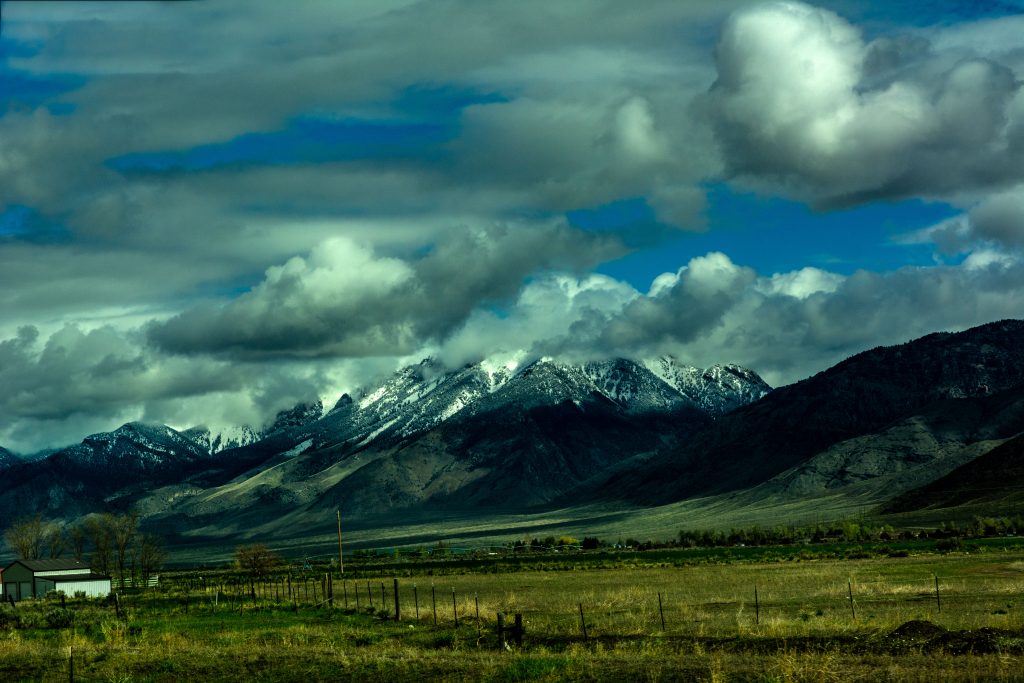
Moore, Idaho
Arco is not the only city in Butte County. No. There are three in total. Arco, with a 2019 estimated population of 880 is by far the largest. Butte City, just a few miles east of Arco on US 20/26 is the smallest. It’s 2019 estimated population was just 68. In the middle is Moore (170 in 2019). Both are worth a stop. I had a great lunch in Butte City, and Moore has gorgeous scenery. Two other communities are Howe and Darlington. Howe is unincorporated and lies 18 miles northeast of Arco. Darlington is best known for its cemetery. As near as I can tell, the most recent burial took place in 1940. Most graves date from 1919 and 1920.
I hope I have convinced you to stop and spend some time in Butte County, Idaho. I have always enjoyed myself while there, and I look forward to returning in the not too distant future.
That’s all for now.
TTFN
![]()
